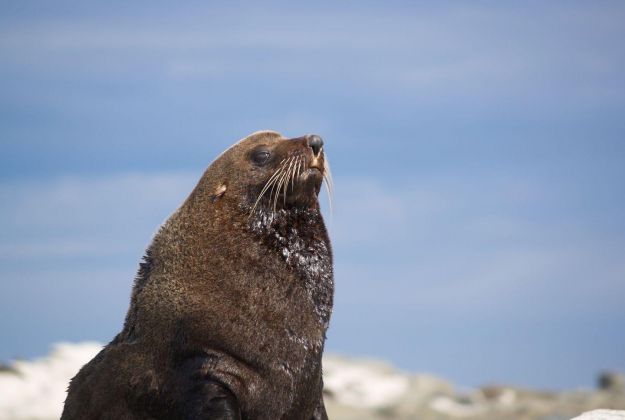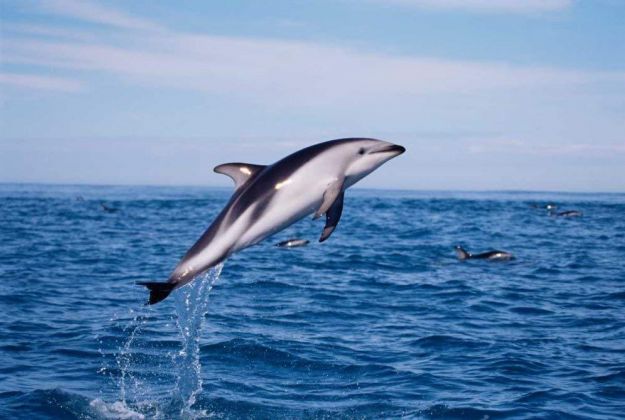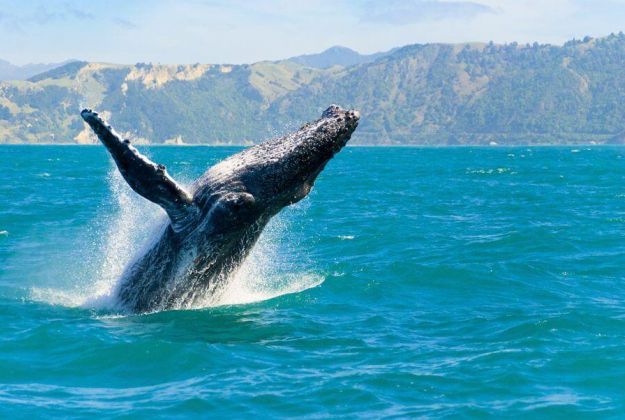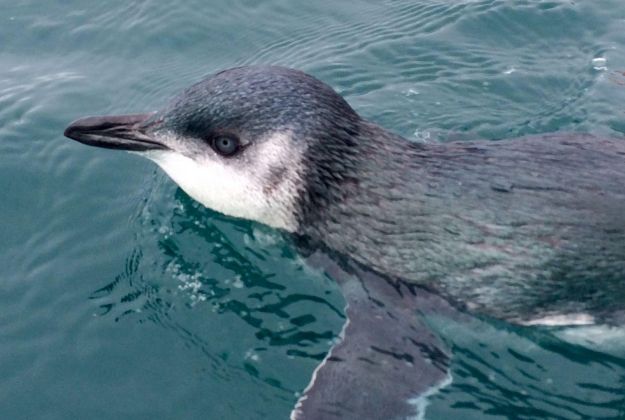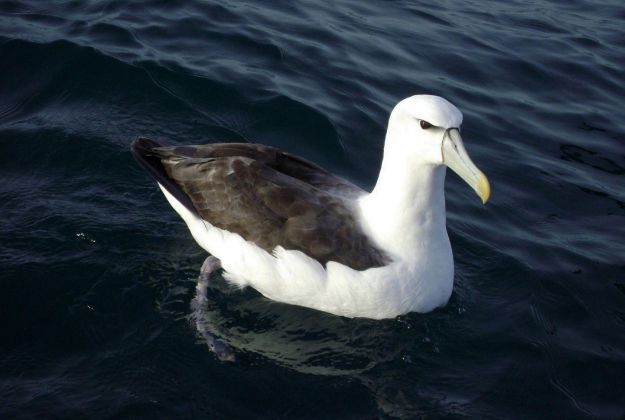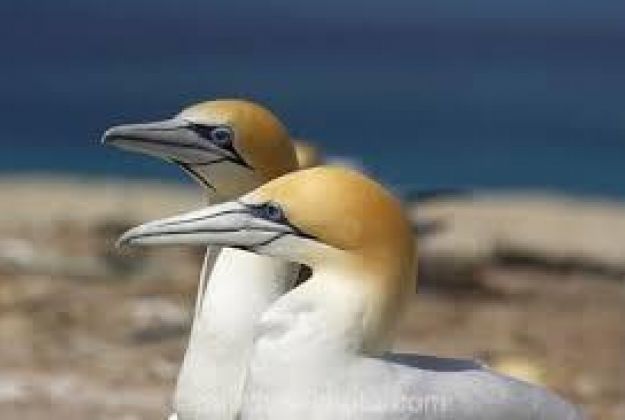Features
Fur seals are distinguished by visible external ear flaps and hind flippers which rotate forward, allowing them to move quickly on land.
This pointy-nosed fur seal has long pale whiskers and a body covered with two layers of fur. Their coat is dark grey-brown on the back, and lighter below; when wet kekeno look almost black.
Kekeno Kaikoura seals are very good swimmers and weaned pups will turn up almost anywhere around New Zealand.
On land they sometimes become disoriented and have been found in unusual places such as back-yards, drains and streets.
- Adult females: maximum length 1.5 m, weight 30-50 kg.
- Adult males: maximum length 2.5 m, weight 90-150 kg.
Population
In New Zealand, minimum estimates of the fur seal population are 50- 60,000, but this is almost certainly an underestimate. Recent work in Otago has shown there was a population increase of 25% per year between 1982 and 1994 and surveys in 1995 indicated this was continuing.
A similar rate of increase has been noted in the Nelson/Marlborough region and also in the Sub-Antarctic Bounty Islands. Since 1991, the fur seal population has recommenced breeding on the North Island.
Diet and foraging
Kekeno feed mainly on squid and small mid-water fish but also take larger species such as conger eels, barracuda, jack mackerel and hoki mostly off the continental shelf in depths greater than 22 metres.
The New Zealand fur seal dives deeper and longer than any other fur seal. Female fur seals on the West Coast are known to (occasionally) dive deeper than 238 m, and for as long as 11 minutes.
Most dives are only 1-2 minutes. Most of their prey species follow a vertical migration, i.e. they come nearer the surface in the middle of the night, and sink back to deeper depths during the day.
In autumn and winter, they dive much deeper with many dives deeper than 100m. At least some females dive deeper than 240m, and from satellite tracking they may forage up to 200km beyond the continental slope in water deeper than 1000m.
Life history
The Kekeno fur seal spends a lot of their time on rocky shores, at sites called haul-outs. Every year, these sociable animals return to the same area for the breeding season.
Females reach sexual maturity between 4 and 6 years and will give birth to a single pup more or less every year until their death at on average 14-17 years.
Females mate 6-8 days after the birth of their pup, even before their first foraging trip. Delayed implantation means the egg is fertilised, but does not implant in the uterine wall for another 3 months.
Gestation is about 9 months, even though the female is mated 360 days before she gives birth.
The breeding season is from mid-November to mid-January. Pups are suckled for about 300 days, though some will continue to suckle into their second year.
Females alternate foraging trips (periods of 1-20 days at sea) to feed, with attendance periods (1-2 days), where they are at the rookery to suckle the pup.
Pups start to feed on solid food before weaning, and spend a large proportion of time playing with other pups and objects such as seaweed and reef fish.
Juvenile fur seals have been found over 1000 km from their place of birth. Males are sexually mature at 5- 6 years, but are unlikely to be socially mature (able to hold a territory) for at least another 3 years.
Dominant bulls put on displays of glaring and posturing and fighting with other males just prior to the breeding season to gain territories.
Fur seals are polygamous breeders: this means that a male may mate with many females in a single breeding season.
Fur seal yearly cycle
Aug-Nov:Weaning and dispersal in the Spring
Dec-Jan: Pup birth and mating in Summer
Feb-July:Pup nursing and winter haulout
Predators
Great white and sevengill sharks are the main predators of Kaikoura seals. New Zealand sea lions may occasionally take juvenile fur seals in the sub-Antarctic islands but this has not been reported on the mainland.
Human impact
New Zealand fur seals ranged around New Zealand before the arrival of humans with a population of about 2 million.
They were taken as food by Maori. The onset of European sealing for meat and pelts in the 1700s and 1800s pushed them to the brink of extinction.
In 1894 Kekeno Kaikoura seals were fully protected and at 15% of their former population are now becoming increasingly common.
Human disturbance and activity are the causes of most threats to the Kekeno fur seal population today. This includes entanglement in fishing gear and marine debris and harassment by the public.
Rules for observing Kaikoura seals
- Observe the seal quietly
- Always keep dogs and small children well away from seals
- Avoid getting nearer than 20 metres to the seal
- Do not touch the seal under any circumstances
- Do not get between the seal and its access to water
- Do not feed the seals
All Kaikoura seals should be treated with caution. They have large teeth, and can easily become aggressive. They also move surprisingly fast on land. A fur seal can bite with up to 2 tonnes per cm pressure.
Do not feed the seals. Feeding them dead fish and human food disrupts their natural diet. Bacteria that naturally occurs on our skin is also harmful to their digestive system.
Do not attempt to move, or assist adults or pups. Even if it is sick or injured it may be capable of inflicting serious injury. Seals also harbour infectious diseases that can be transmitted to humans, and are difficult to treat.
Kaikoura seals sometimes turn up in unexpected places. They usually move on but in some cases they may need help. Call the DOC HOTline, they will know what to do. You cannot keep a kekeno. Possessing a fur seal, or any other species of seal, without a permit is illegal.
When to contact Department of Conservation
If you find a fur seal that is:
- Severely injured
- Entangled in marine debris
- Being harassed by people or dogs
Call the DOC Hotline on Freephone 0800 362 468.
When not to contact DOC
The following is normal behaviour for kekeno:
- Regurgitating, sneezing or coughing
- Crying, these are natural moisture secretions
- A young seal drifting away from its mother flapping its flippers in the air as if stranded
- Immobile
- Fighting



